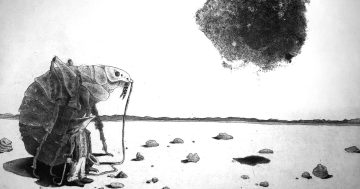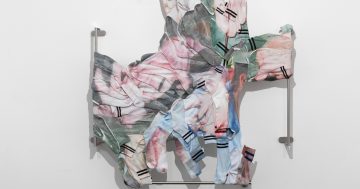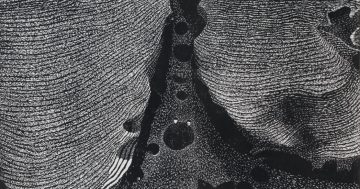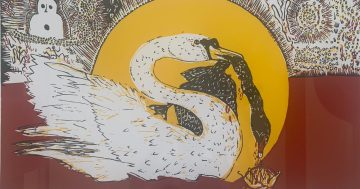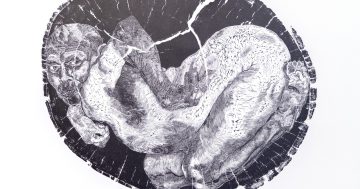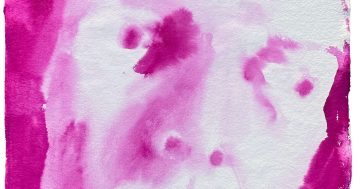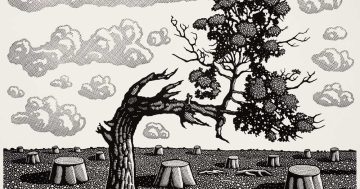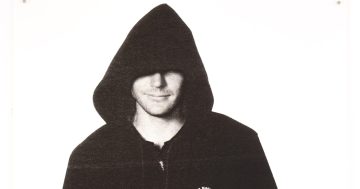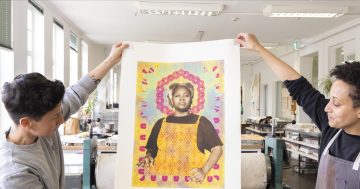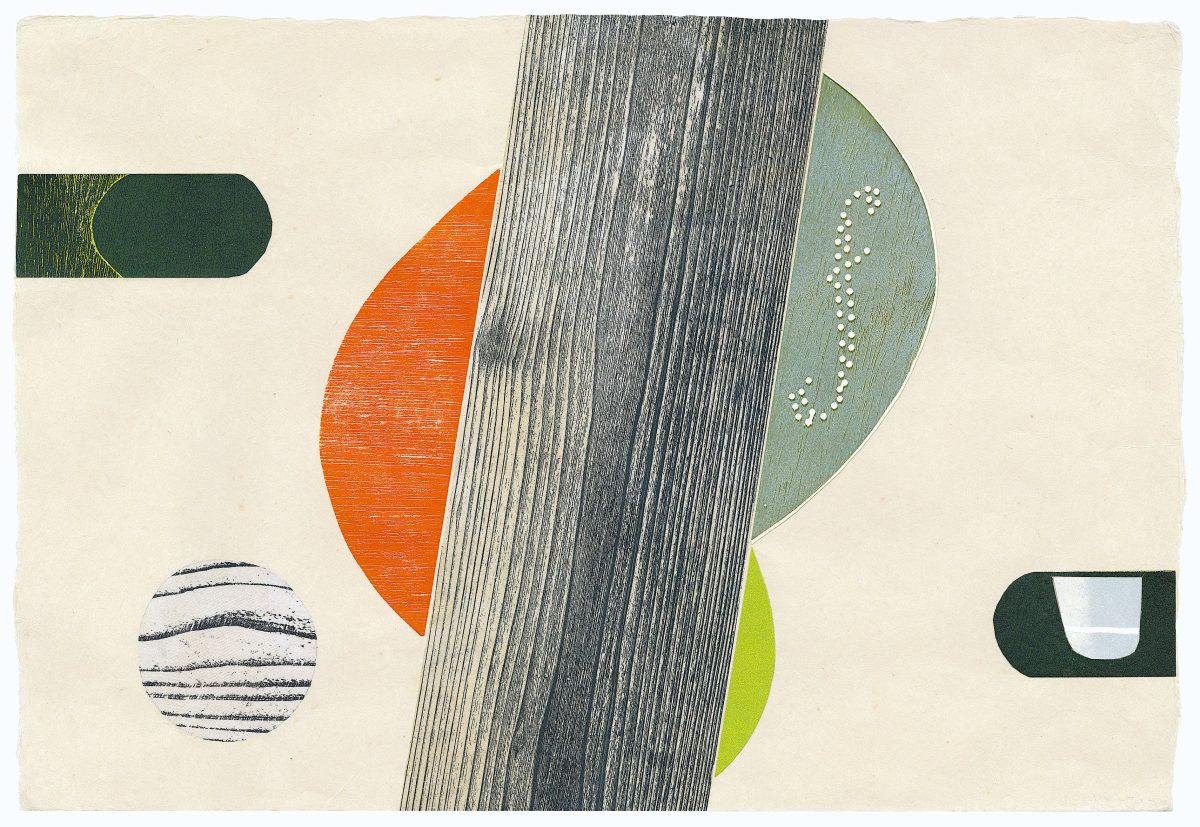
Neilton Clarke’s Mountain Shift 1 2023. Image: Humble House Gallery
Sydney Printmakers is the oldest and most respected organisation of printmakers in Australia. It has been going for over 60 years and has always represented the finest printmakers in NSW.
Many of its current members have roots in the Riverina, the South Coast and Canberra and are familiar to local audiences.
Membership is capped at 60, and applications for membership undergo a strenuous vetting process. This ensures that members have an established track record and have earned the respect of their peers.
This exhibition is huge – 72 prints by 24 artists – spread throughout the two storeys of the gallery. The antiquated idea that prints are small, black and white, exquisitely worked and are a bit like framed postage stamps that sit in dingy corridors of Victorian-era dwellings is entirely at odds with what you encounter at this exhibition.
Some of the works on display are quite large – measured in metres – brilliant in colour, stunning visually and challenging conceptually.
Many of the prints are unique – in other words, they have not been printed in an edition – but all employ some sort of printmaking technology in their making.
There are prints that employ etching, lithography, woodblocks and linocuts, stencils, screenprints and the Japanese mokuhanga technique, as well as digital prints, inkjet prints and examples of photopolymer printmaking.
Whereas a few decades ago, printmakers could be classified through technique – etchers, engravers, relief printmakers and lithographers – today, printmakers, like many other artists, negotiate the complex conceptual challenges posed by the piece in front of them and will frequently work with a mixture of techniques in the same print to create a startling artwork.
Some of the prints in the exhibition are simply superb and are the best of their kind. On entering the building, I was stopped in my tracks by the work of Neilton Clarke.
His Mountain Shift 1 is, in many ways, a perfect print with relief, screen printing and collage beautifully balanced so that nothing can be taken away or added to the print except to its detriment. It is a fine balancing act and it is little wonder that Clarke enjoys international acclaim.
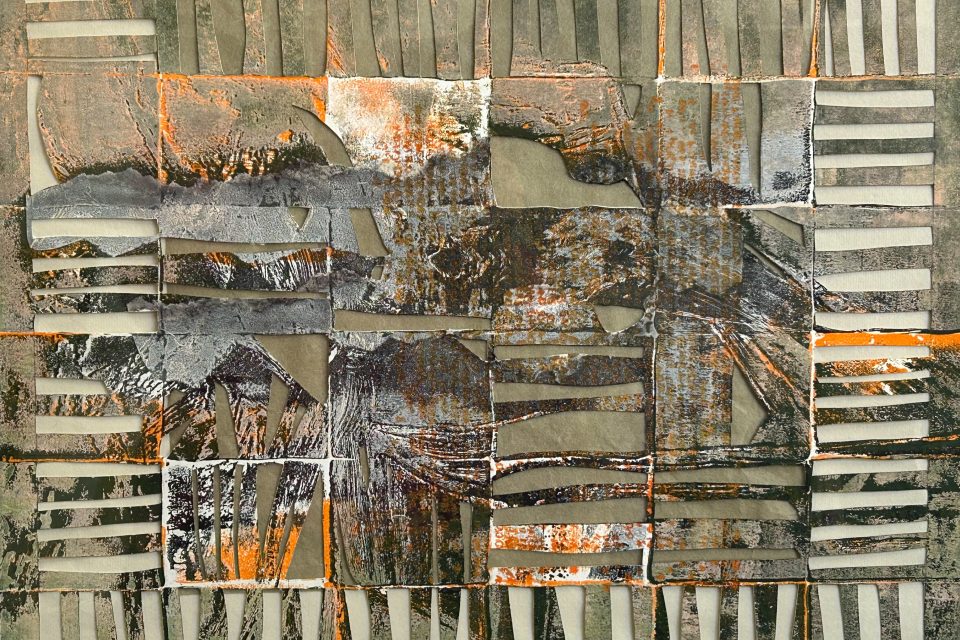
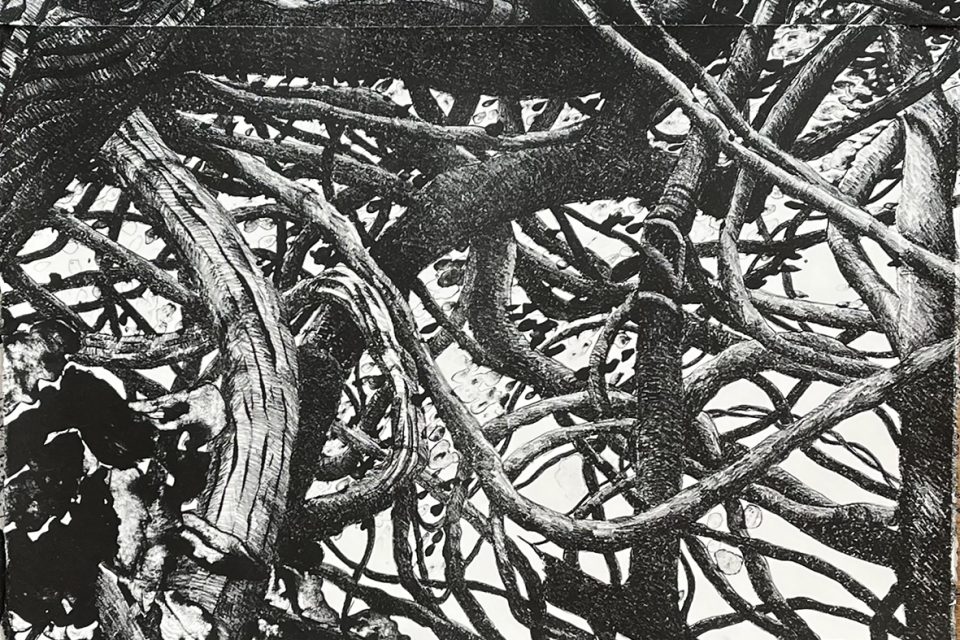
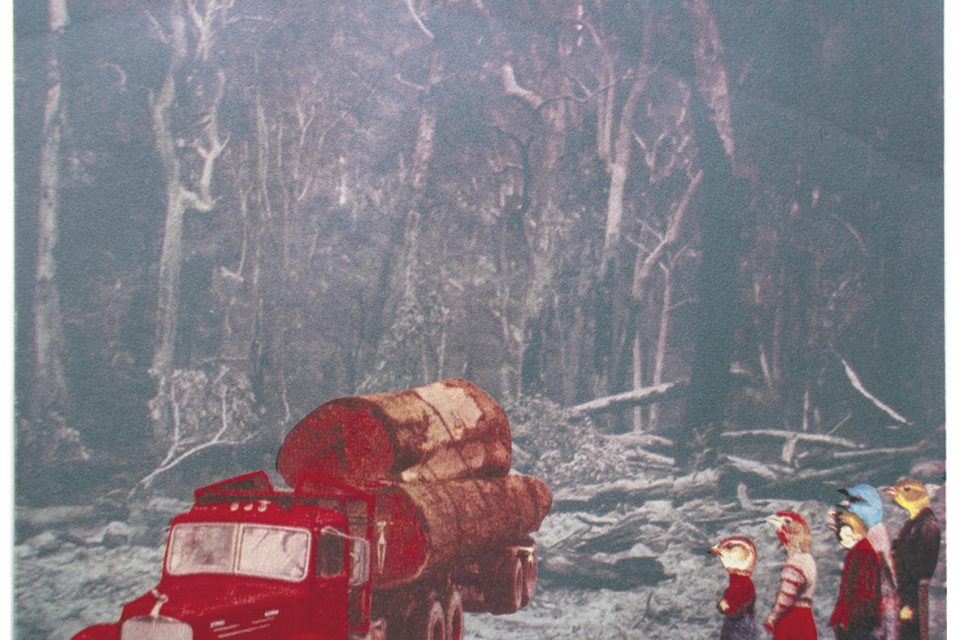
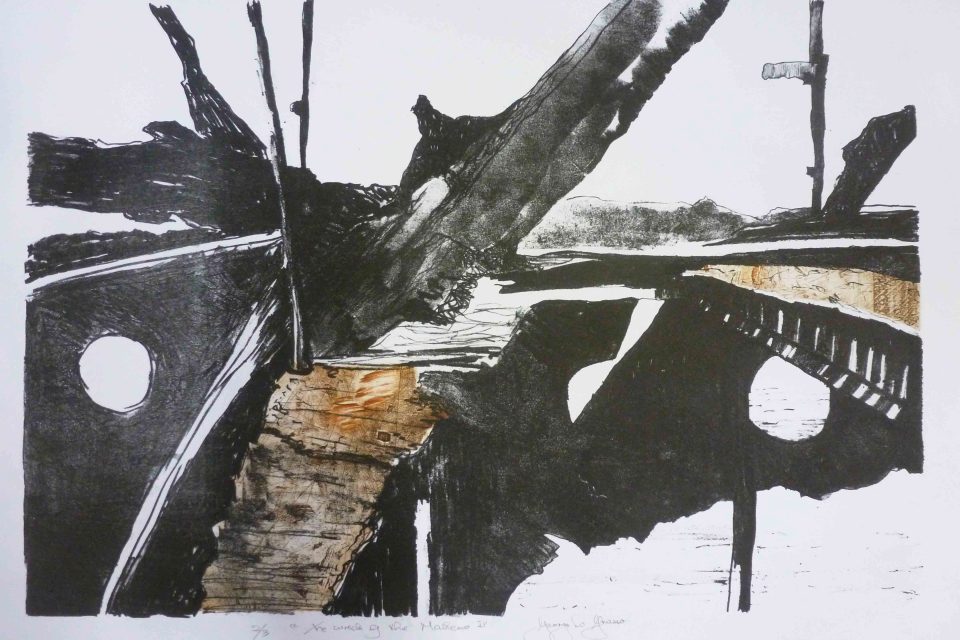
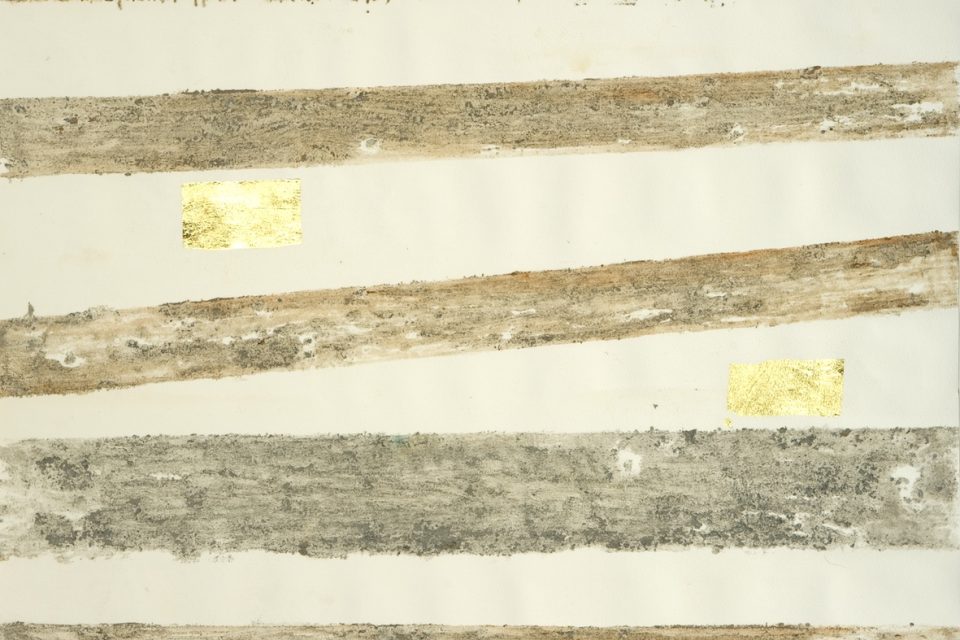
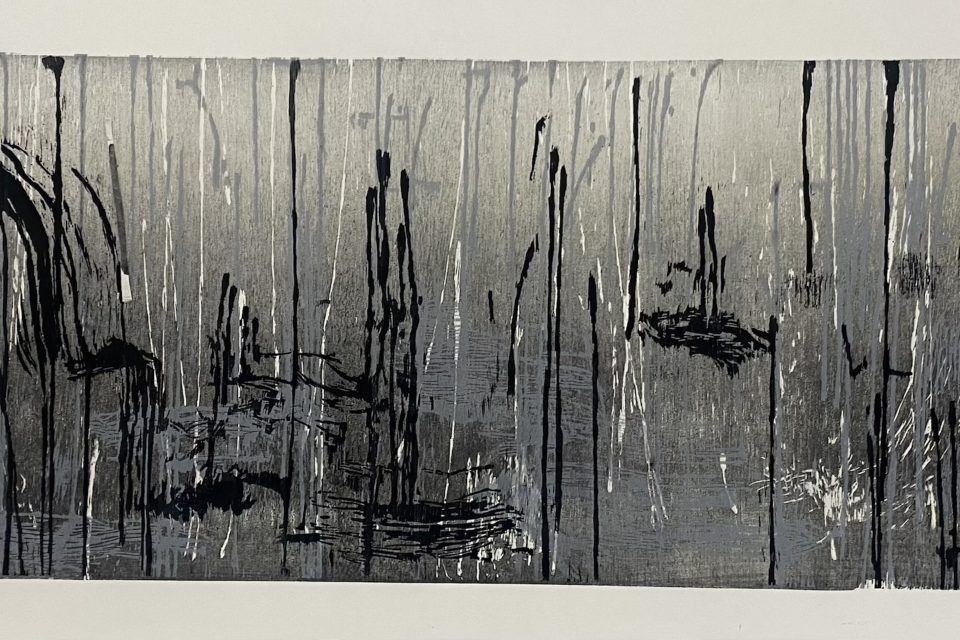
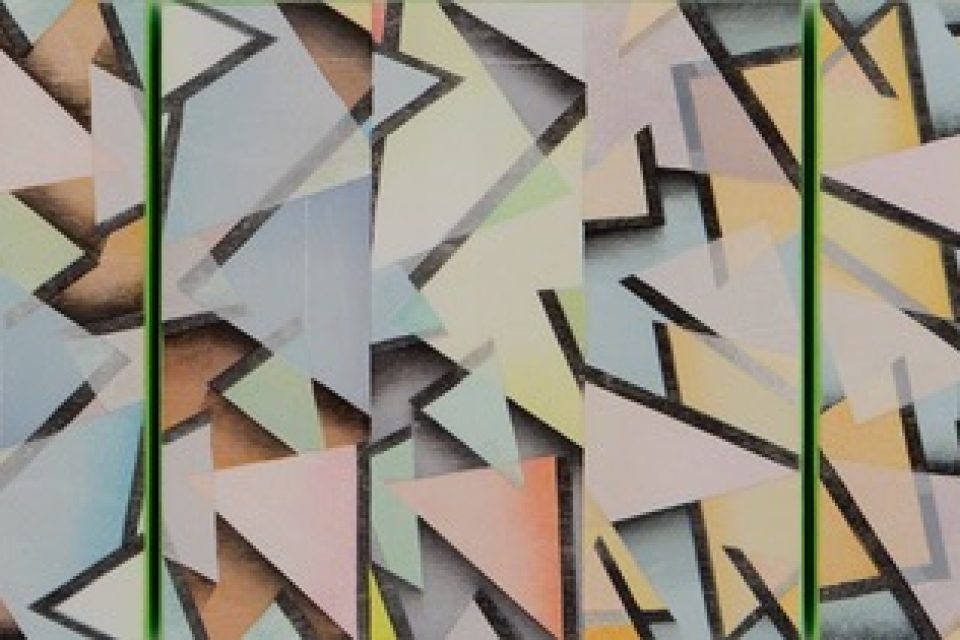
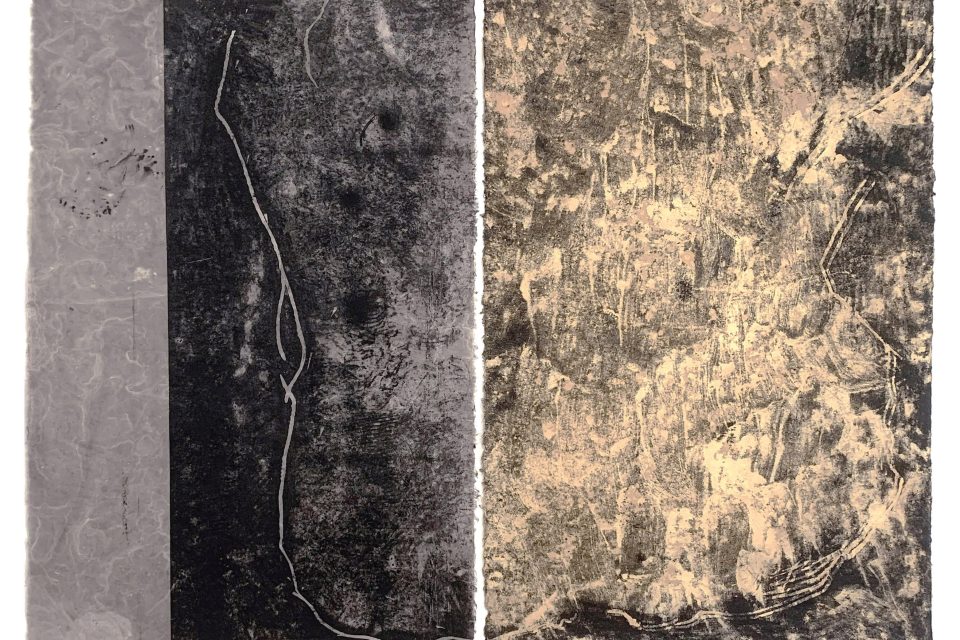
Similarly, Gary Shinfield’s Dam 2 has a beautifully considered surface evoking mood and sensibility – it possesses a great subtlety that completely absorbs you.
I have admired his work for many years when he was frequently exhibiting in Canberra, and now he has achieved a very rich vein of art practice.
Roslyn Kean, whose work I first encountered when she was teaching at the Canberra School of Art a few decades ago, has mastered the traditional Japanese woodblock technique after many years of study in Japan. She has made it her own language of expression, for which she has received accolades nationally and internationally, including in Japan.
Her The Rhythm of Lines is a breathtaking work for its complexity and remarkable for its lucidity and inner peace. It is a triumph of slow art, and you are spiritually enriched the longer you pause with it.
Seraphina Martin is another printmaker with strong links to Canberra. In her seductive prints, she manages to create an amazing fantasy world that you want to enter and absorb.
Anna Russell makes some of the most ingenious and intricate pieces in the exhibition, while Wendy Stokes, in prints like Resilience and Walking drawing III Nocturne, creates spaces that are like memorable wells in nature into which we can dive and dissolve.
Jacqui Driver, formerly a prominent lithographer at the Canberra School of Art, presents amazing slices of vegetation, like the mind of a forest in her monumental prints.
Therese Kenyon invites us to see reality as if for the first time and in a different light; Seong Cho shows us the environment through her eyes and invites us to share her rare sensibility, while Carmen Ky reinvents the world in contemplative icons.
This is an exceptional exhibition crowded with outstanding work, including that by Nathalie Hartog-Gautier, George LoGrasso, Janet Parker-Smith, Susan Rushforth, Laura Stark and Thea Weiss. Many of these artists would stand tall in any international company.
The main difference between this show in Canberra and this show being held in London, Chicago or Berlin is that the prices here lack an extra digit. Australian printmaking remains woefully underpriced.
Sydney Printmakers ‘Divergent’ is at Humble House Gallery, 93 Wollongong St, Fyshwick, until 21 April.
Original Article published by Sasha Grishin on Riotact.


